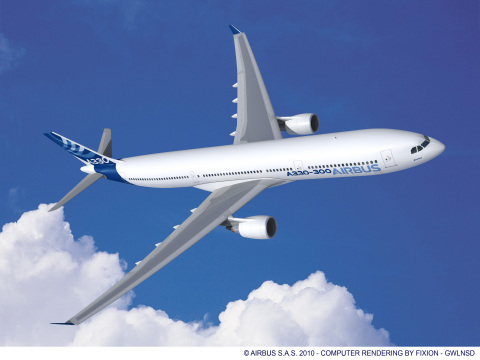NEW YORK--(BUSINESS WIRE)--A maturing small twin-aisle aircraft market presents challenges and opportunities for Airbus as it considers the future of its A330 aircraft, according to Steve Mason, Vice President of Aircraft Analysis, CIT Aerospace at CIT Group Inc. (NYSE: CIT) (cit.com), a leading provider of financing and advisory services to small businesses and middle market companies. These views and others are presented in “The Small Twin-Aisle Market: What’s Next?” (cit.com/mason), the latest piece of market intelligence to be featured in the CIT Executive Insights series (cit.com/executiveinsights).
Small Twin-Aisle Aircraft Market Outlook
Since the introduction of the Boeing 767 in 1982 and Airbus’ A330 in 1994, the small twin-aisle aircraft segment has been an area of strength for these aircraft manufacturers. “For Airbus and Boeing, the 250- to 400-seat twin-aisle market has proven successful, especially compared with the commoditized single-aisle market and the unpredictable very large aircraft (VLA) market,” says Mason.
Mason adds that CIT recently analyzed the capacity requirements of the 250- to 300-seat market, commenting, “We concluded that between 2018 and 2021, major U.S. trunk carriers, Asian carriers throughout the continent, especially in China, along with major European carriers will need additional capacity in this seat market.”
The A330 at a Crossroads
Airbus continues to invest in the A330 and plans to introduce its longer-range 242T MTOW version in 2015, for which CIT is proud to be the launch customer. However, Airbus faces important decisions as the A330 airframe ages and the market evolves.
“Twenty years after its introduction, the A330 is at a crossroads,” says Mason. “The aircraft is not selling as well as Airbus would like, and the question now facing both the company and its customers is what options remain for the A330 and, for that matter, the entire 250- to 300-seat market.”
Choices for Airbus
According to Mason, Airbus has four principal options for the A330: do nothing and cede market share in this segment; introduce small tweaks, such as incremental improvements in engine efficiency; rely on a “shrink” version of the larger A350-800 to cover this market segment; or implement substantial changes to the aircraft.
“Rather than tweaking the design, Airbus could invest in a major overhaul that would undoubtedly include new engines,” says Mason. “Engine manufacturers are pushing Airbus to consider existing engine designs for a new A330 – dubbed the A330neo, or ‘new engine option’ – that could benefit both Airbus and the engine manufacturers.”
The Best Option: Finding Additional Value for the A330
Mason believes that the best option for Airbus is to invest in improvements to the A330 that add value and extend the life of the airframe. “While the A330’s sales may be trailing off, the plane remains one of the workhorses of the Airbus fleet,” says Mason. “The company’s best option for combating declining sales and maintaining market share against rising competition from Boeing is to pursue its options for extending the life of the aircraft. We believe Airbus can design a modified A330 that is competitive, and that best serves the interests of its customers and shareholders.”
EDITOR’S NOTE:
View CIT’s corporate overview video (cit.com/corporatevideo) and CIT Perspectives (cit.com/perspectives), which showcase our insights and ability to put our knowledge to work for the small business, middle market and transportation sectors. Follow us on Twitter, LinkedIn, YouTube and Facebook or register to receive press releases at cit.com/newsalerts.
About CIT Aerospace
CIT Aerospace is one of the world’s leading aircraft leasing organizations and provides leasing and financing solutions – including operating leases and structuring and advisory services – for commercial airlines worldwide. It owns and finances a fleet of more than 300 commercial aircraft leased and financed to more than 100 customers in 50 countries. cit.com/aerospace
About CIT
Founded in 1908, CIT (NYSE: CIT) is a financial holding company with more than $35 billion in financing and leasing assets. It provides financing, leasing and advisory services to its clients and their customers across more than 30 industries. CIT maintains leadership positions in middle market lending, factoring, retail and equipment finance, as well as aerospace, equipment and rail leasing. CIT operates CIT Bank (Member FDIC), its primary bank subsidiary, which, through its Internet bank BankOnCIT.com, offers a suite of savings options designed to help customers achieve a range of financial goals. cit.com




